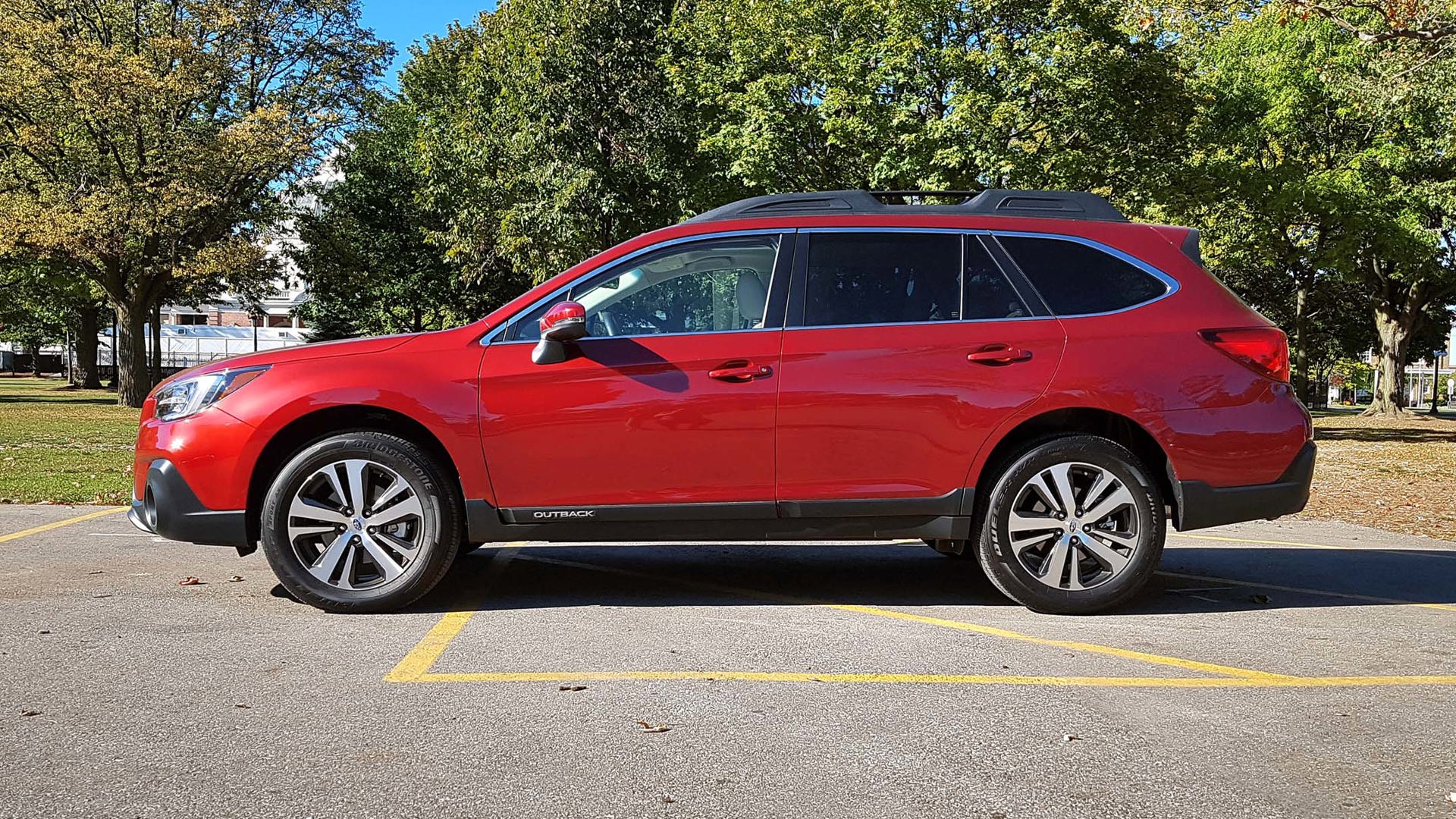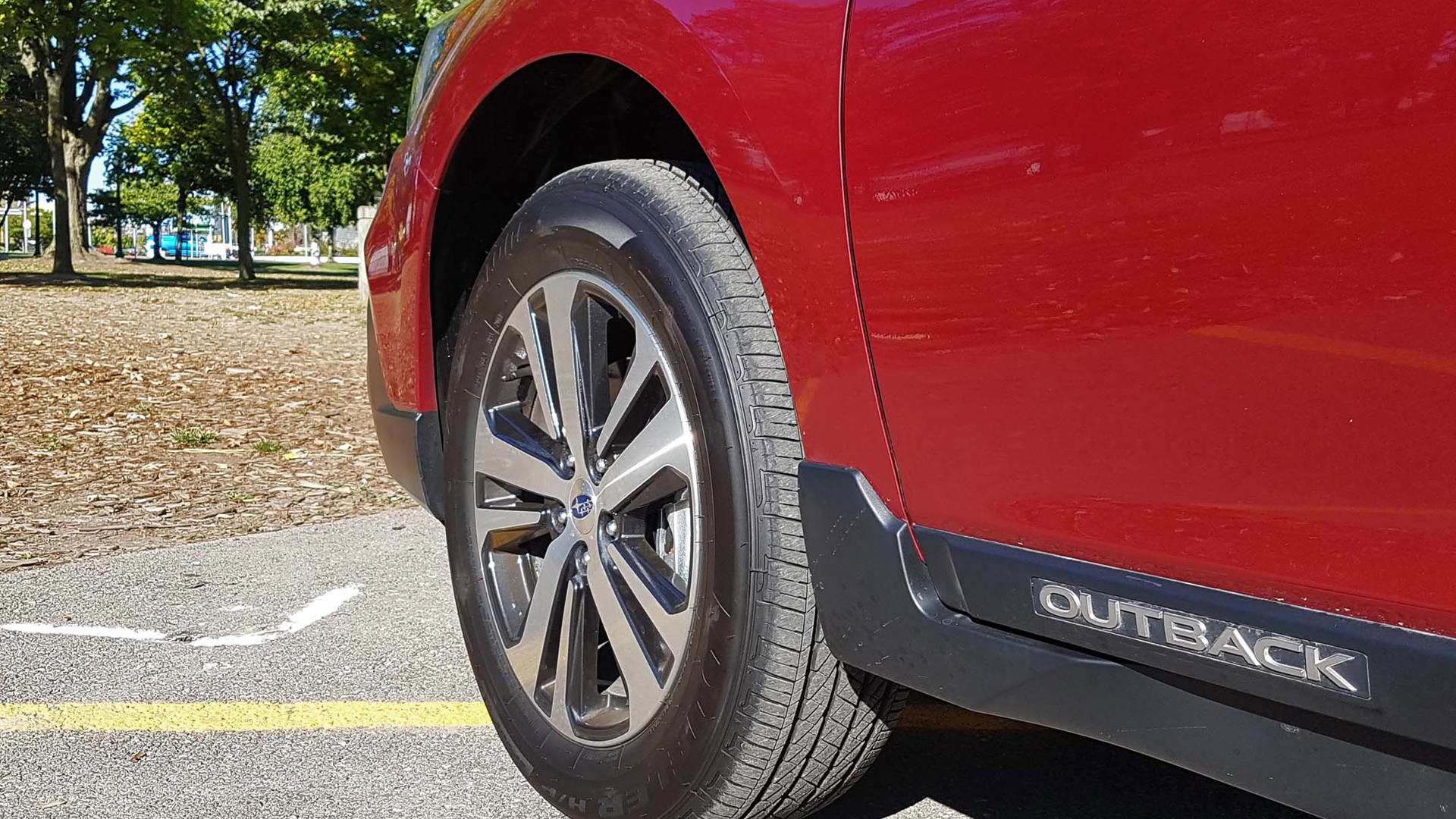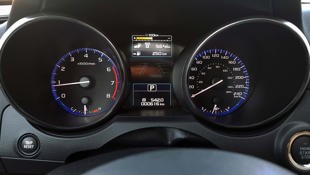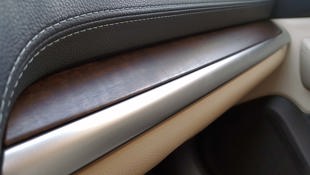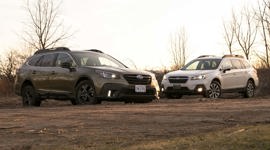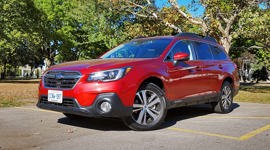 AutoTrader SCORE
AutoTrader SCORE
-
STYLING7/10
-
Safety7/10
-
PRACTICALITY8/10
-
USER-FRIENDLINESS7/10
-
FEATURES8/10
-
POWER8/10
-
COMFORT8/10
-
DRIVING FEEL7/10
-
FUEL ECONOMY7/10
-
VALUE7/10
It’s nice to know that there are certain things you can count on in this life, like best friends, rising taxes, and the consistency of the Subaru Outback.
Hasn’t necessarily changed a whole lot […] because that’s exactly how its devotees like it, thank you very much.
Rugged, capable, and sitting in its very own space somewhere between wagon and traditional SUV, the Outback continues to stand remarkably on its own. It also hasn’t necessarily changed a whole lot for the 2018 model year despite having gone through a refresh, mainly because that’s exactly how its devotees like it, thank you very much.
For the most part, this strategy works very well for Subaru. But the automotive industry moves at a lightning-quick pace these days, and there are a few things about the 2018 Subaru Outback that, while they don’t stick out like a sore thumb on a test drive, are beginning to be outdone by some SUV competitors working at similar price points.
I’m willing to bet, though, that few Outback buyers will care. If this is your car, then you probably already know it.
Powertrain
The engines on offer for the 2018 Outback are the same as in recent years: there’s a smaller 2.5L four-cylinder and a larger 3.6L six-cylinder, both configured in Subaru’s boxer layout. This tester is equipped with the smaller of the two, which gives it an output of 175 hp and 174 lb-ft of torque at 4,000 rpm.
As a grocery-getter, the smaller engine is more than adequate. It feels nicely balanced and smooth, and it has enough guts to get you around the slowpokes on the highway. If you’re planning to use your Outback for any heavy loads or serious off-roading, consider opting for the larger mill.
Now, this next point is one of the biggest changes to this car for 2018, and it just might break your heart. Are you sitting down?
You can’t get a manual transmission in a new Outback anymore. Period.
Why, Subaru? Why?
The answer is that they don’t sell anymore, of course. But it still marks a sad day. I thought Subaru might go on record as the last hold-out.
The transmission we’re left with is the CVT, which isn’t bad. It’s configured with artificial stepping to give it a feel that more closely resembles a traditional gear stack, and this year’s version lets you move between those steps on your own using a new manual mode. A few years ago, I called this one of the best CVTs on the market. Today, though, a few competitors have made theirs better while Subaru’s has remained more or less unchanged. I find that it’s sometimes static when I wish it was pulling and vice versa. (The 3.6R comes with a CVT that’s tuned for higher torque, which might be an improvement.)
But the primary purpose of a CVT is to help with fuel economy, and the Outback performs steadily, if not exceptionally, in that regard. Its official NRCan rating in this configuration is 8.5 L/100 km. Over my week with it – when I drove it mostly empty, relatively conservatively, and about 70 percent on highways on sunny and warm days – I averaged 9.7 L/100 km, which I found to be a surprising difference from the official figures.
Subaru’s hallmark is its standard symmetrical full-time all-wheel drive, and the Outback is no exception. In a whole lot of places in Canada, this is eminently useful. There are certain situations, though, where it might be nice to be able to switch into two-wheel drive once in a while to save on fuel, whether automatically or manually, which is a feature that’s becoming more common in some of the Outback’s mid-size SUV competitors.
Design
The Outback received a refresh for the 2018 model year, but updates to its exterior are relatively light, which is as it should be. The revised front grille, mirrors, and bumpers put a lightly updated frame around its prominent roof racks, wheel wells, and rocker panels. It’s for outdoorsy types, and it looks the part.
Inside, though, I found the changes to be more notable. The Limited model’s fit and finish has been improved with stitching highlights and wood-look paneling – no, it’s not real, but it’ll fool you until you tap on it. The steering wheel has been redesigned and is heated at this trim level, and the heated seats are of the three-stage variety (some Subaru models still use the high-low-off switch style system). And as an added bonus, the rear seats are heated from Limited up as well, a less common offering in cars of this type and price point.
My few observations are that the sunroof is relatively small, the interior lets in more road noise than a lot of its contemporaries – sound-deadening technologies have come a long way over the past five years – and the layout of the instrument cluster makes it difficult for me to track my speed on highways because the steering wheel gets in the way. But overall, I find the Outback to be a roomy and inviting place to spend time.
Connectivity
This is an area where Subaru was trailing just a couple of years ago, but the release of the company’s latest infotainment system has caught them up to the competition substantially.
The base screen in 2.5i models is a 6.5-inch version, but all trims from Touring and up get upgraded to the 8.0-inch unit. This is a good size that’s of good resolution and is easy to see and process while driving, though the dials on the far side of the screen make for a bit of a reach for my relatively short arms. They also don’t have the sharpest of read points. It sometimes took me a couple of trips back and forth with the dial to land on the station I was looking for.
No matter, though, if you prefer to jam to your own tunes: both Apple CarPlay and Android Auto are equipped as standard. In my tester, I needed to be careful of when I plugged my phone in – if I connected it before I hit the ignition, the system wouldn’t detect it. But this is something that would likely eventually become habit.
Safety
Without the EyeSight package, safety features at the Limited trim are, well, limited – you get airbags and LED steering-responsive headlights, and that’s about it.
Add on EyeSight, though, and you’ve got a lot more working for you: pre-collision throttle management, brake assist, and braking; adaptive cruise control; lane-departure warning, lane-sway warning, and lane-keep assist; lead vehicle start alert (this one is a nice touch – it catches you daydreaming and dings at you when the vehicle in front of you moves if you don’t); reverse automatic braking; high-beam assist; and an auto-dimming rear-view mirror.
Verdict
In a few ways, like soundproofing and powertrain enhancements, the Outback could use some additional sprucing up. But it has a pleasant interior and an impressive list of features, even given this tester’s relatively high price point.
More importantly, there’s nothing else on the market quite like it. And here in Canada where its strengths can shine, it’s likely to be a favourite for quite some time.
| Engine Displacement | 2.5L |
|---|---|
| Engine Cylinders | 4 |
| Peak Horsepower | 175 hp @ 5,800 rpm |
| Peak Torque | 174 lb-ft @ 4,000 rpm |
| Fuel Economy | 9.4/7.3/8.5 L/100 km city/hwy/cmb |
| Cargo Space | 1,005 / 2,075 L seats down |
| Model Tested | 2018 Subaru Outback 2.5i Limited With Eyesight |
| Base Price | $38,295 |
| A/C Tax | $100 |
| Destination Fee | $1,725 |
| Price as Tested | $40,120 |
|
Optional Equipment
None
|
|

